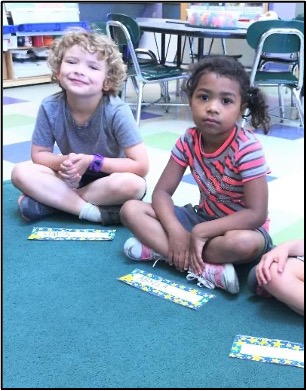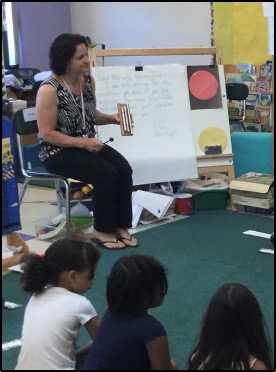Introduction
Morning Meeting is an essential tool to support classroom community building and our social-emotional learning goals for children. Morning meeting provides a structured space where we can connect in an inviting and meaningful way. Intentionally planning for Morning Meeting sets a tone of welcoming, care, equity, respect, and trust – providing time to include each child, model and practice appropriate behaviors and classroom expectations, and the use and care of materials.
Morning Meeting is structured into four key components:
- Greeting
- Sharing
- Games and learning activities
- The morning message
While eventually, a group may be able to do all four components in one meeting, the components can be taught and experienced at meetings over the course of a day. The predictable format of Morning Meeting and the components provides structure and comfort.
Getting Started with Morning Meeting in Pre-K
Being in a Group
- Consider the space and set-up for Morning Meeting. Gather in a circle, or on the edge of the rug, with all children and teachers able to see one another’s faces.
- Teach children how to transition to the rug (pushing in chairs, walking feet), sit appropriately, use signals (quiet signals, same-same, etc.), and other routine practices. Provide explicit presentations for each behavioral component and routine.


Getting Started
Introducing Morning Meeting can begin on the first day of school by:
- Welcoming your group and teaching a simple greeting
- Explicit presentation (model) about how to sit on the rug.
Phase in components, one at a time, taking the time to teach, model, and practice each skill. As children become proficient and confident with a meeting component, teach and add the next component. Spend the first few weeks practicing and mastering a daily greeting and providing explicit presentations of classroom expectations and materials.